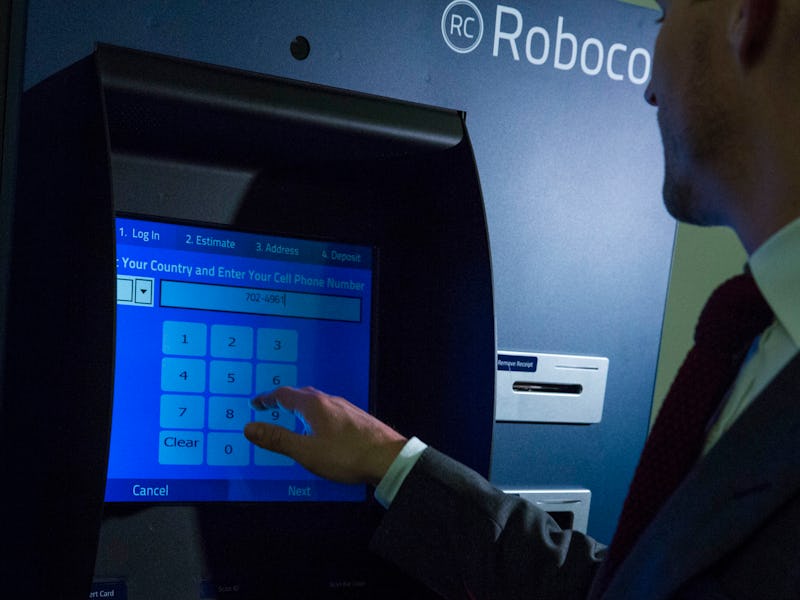Bitcoin ATMs Are Finally Making Cryptocurrency Convenient
The booming kiosk market may be how bitcoin finally goes truly mainstream.

The price of bitcoin is surging, hitting an astonishing $2,750 as of Thursday evening, and people all over the world are beginning to consider making their first foray into the world of bitcoin, and cryptocurrency in general. This year looks like it could finally prove that bitcoin is truly destined to digitally decentralize money — yet continuing frustrations with the impractical process of actually buying bitcoins are still keeping many of the uninitiated away. Now, with a booming bitcoin economy and several years of growth behind them, physical bitcoin kiosks or “ATMs” may be emerging as the answer. There are already over a thousand around the world, and the new ATM challenger Bitlish announced last week that it wants to open as many as 5,000 more in Europe alone.
The reason this matters is two-fold. One factor is that with lots of bitcoin kiosks comes lots of bitcoin availability. You can buy bitcoin on Swiss rail. You can buy bitcoin in Columbian supermarkets. You can buy bitcoin all over New York City. You can even easily buy bitcoin in Russia, a country that has recently mulled the idea of banning the currency entirely.
The website CoinATMRadar helps people find the nearest kiosk wherever they are, and maintains a listing of ATM frequency by country, with the US coming in first, with over 750 kiosks in operation. That number will still have to grow enormously to allow bitcoin to become a truly everyday sort of currency, but thanks to Bitlish and others, that seems likely. Kiosks are also already approaching a density in the U.S. where most people in urban areas have at least a few within driving distance. Many will stumble past one on the average night out. These things make a huge psychological difference in terms of the barrier to entry.
However, there have been some kiosks available before now, so another key factor will be making each individual ATM more convenient than they have been. In the beginning, the only real way to set up a bitcoin wallet, the digital money-clip that safely stores the cryptographic IDs that are your bitcoins, was to have some sort of direct interaction with your bank. Since then, online services have made the process three-steps easy.
Now, most (and probably soon all) bitcoin kiosks allow what we might call impulse purchases by people who have not already gone to the trouble of setting up a wallet. Genesis Coin, the largest kiosk manufacturer by a large margin, allows users to choose to create a new wallet upon purchase of their bitcoins, and prints this new all-important address on an adorably anachronistic little piece of physical paper. It’s less secure, but assuming you aren’t going to keep your new bitcoin in this temporary locker for long, it’s not too big a deal. With your new bitcoins in hand (literally in hand; do not lose that paper) you’ll find no lack of motivation to go through the five-minute process of setting up a more secure wallet to use from then on. Most purchases won’t be made through ATMs, since they impose higher fees than online transactions, but most first purchases could be.
Bitcoin will not be made or broken by $50 impulse-purchases, but its mindshare just might be. The more people have any amount of any cryptocurrency for any reason or length of time, the more people will understand the fundamentals of the role these important new tools could play in the future. That will be crucial if bitcoin and its “altcoin” alternatives are ever going to reach truly mainstream status as both a payment option and an investment currency.
It might sound like a shallow point to make in the context of shadow markets and national currency manipulation, but when it comes to mainstream acceptance of a technology, convenience is king.